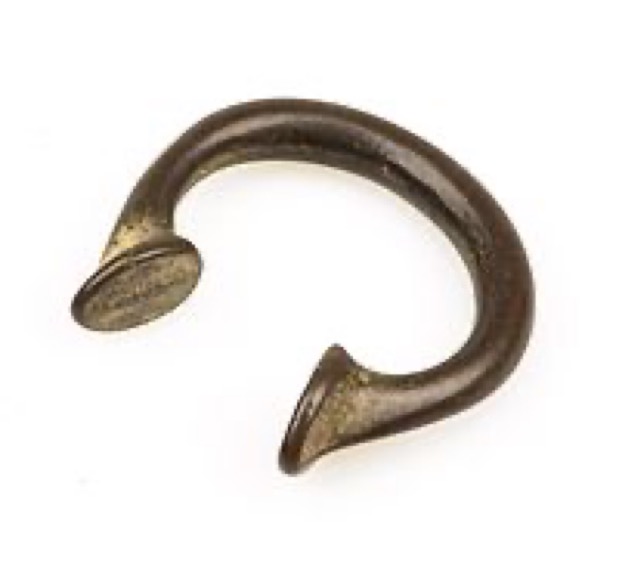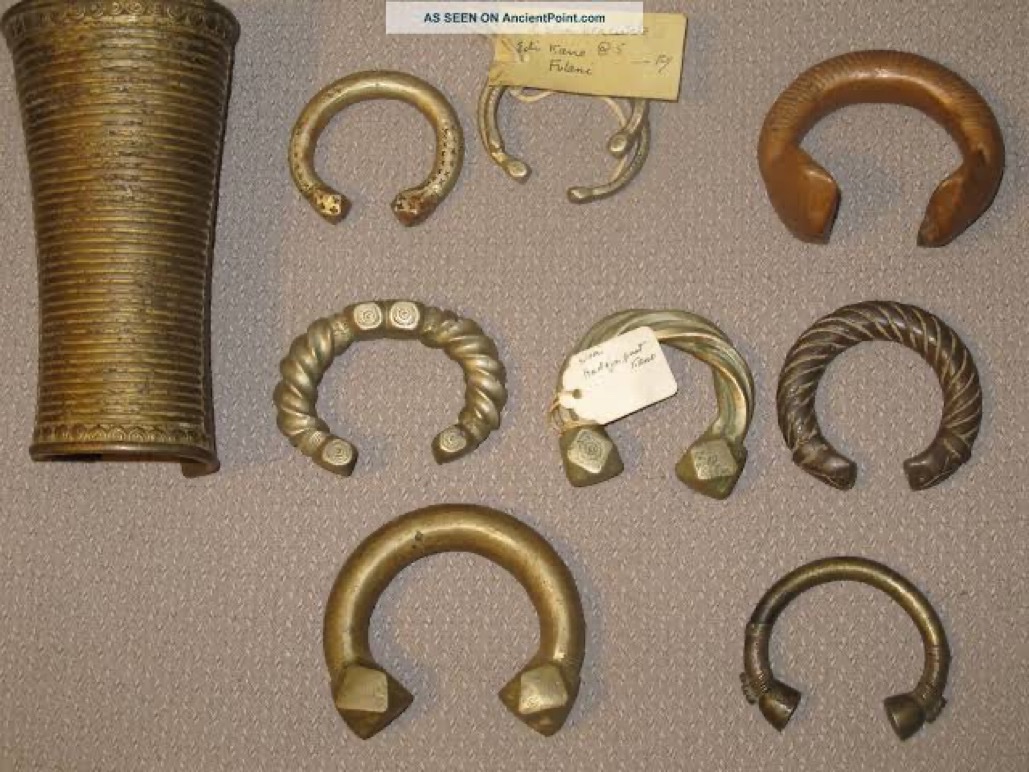One of the currencies at the time - the Manillas, was a form of legal tender made of bronze or copper, and was being used in most cities across Africa, especially in West Africa/

The Manillas
The Manillas originate from the Akwa Akpa kingdom, the ancestral home of the Efik speaking people now residing in Calabar, Cross River State Nigeria as far back as the 15th century. Legend has it that by the year 1505 in Calabar (one time capital city of Nigeria), the Manillas was already used as a medium of exchange. The Efik people called it Okpoho Manilla. The currency soon spread throughout Africa, and it continued to serve as money and decorative objects until the late 1940s.
The Manillas are usually horseshoe-shaped, with terminations that face each other. They may also be described as roughly lozenge-shaped. It bears some resemblance to torcs or torques, in that it was rigid, circular and open-ended at the front. Africans of each region had names for each variety of manilla, probably varying locally. They valued them differently, and were notoriously particular about their types.

Calabar (Akwa Akpa), the chief city of the ancient coastal kingdoms of the Bight of Biafra in the 1505 was a place where a slave could be bought for 8–10 manillas, and an elephant’s tooth for one copper manila.
The currency later became a legal mone along the coast of Benin and Biafra for Slave trade and across almost all coastal region where slave trade existed. Manillas may still be occasionally used in few remote villages in Burkina Faso (2000).

Most Manillas Currency are currently on display in most Museum across the world.
